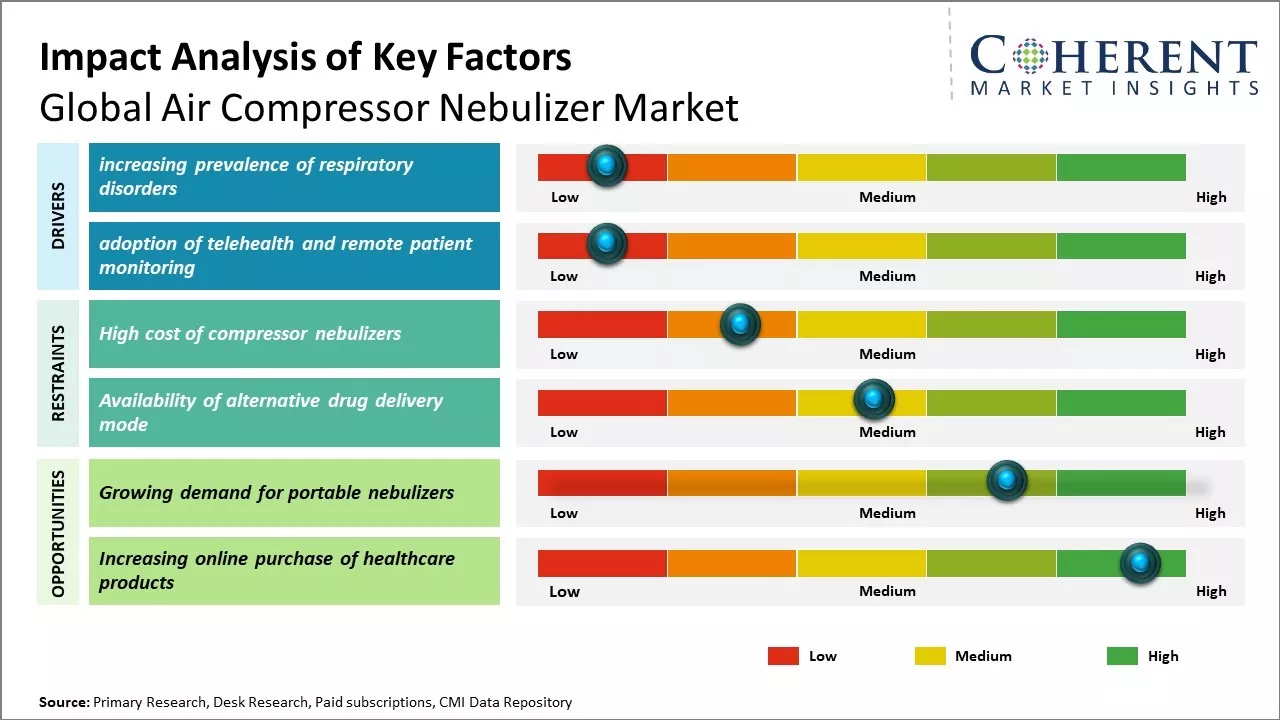The global air compressor nebulizer market is estimated to be valued at USD 1,007.2 Mn in 2025 and is expected to reach USD 1,694.0 Mn by 2032, exhibiting a compound annual growth rate (CAGR) of 7.7% from 2025 to 2032.

To learn more about this report, Request sample copy
The air compressor nebulizer market is expected to grow steadily over the forecast period. Increasing prevalence of respiratory diseases around the world is the key factor driving the demand for air compressor nebulizers. As per research, respiratory diseases, such as asthma and COPD, chronic obstructive pulmonary disease (COPD) affect, millions worldwide. Air compressor nebulizers are widely used for effective drug delivery in homecare treatment of such diseases. Growing geriatric population prone to respiratory issues along with rising urbanization and pollution levels in emerging nations will drive the air compressor nebulizer market growth during the next few years. However, availability of alternative treatments and devices for respiratory diseases can hamper the market growth to some extent. Overall, enhanced patient awareness and expanding application areas of air compressor nebulizers are creating new opportunities in this market.
Increasing prevalence of respiratory disorders
The global air compressor nebulizer market is witnessing significant growth due to the increasing prevalence of various respiratory diseases across the globe. Respiratory diseases have become highly common due to rising air pollution levels and changing environmental conditions. Diseases such as asthma and chronic obstructive pulmonary disease (COPD) affect a substantial population worldwide and their management relies significantly on the usage of nebulizers. According to some estimates, over 339 million people suffer from asthma globally and it is one of the major causes of years lived with disability. COPD prevalence is also increasing rapidly and has emerged as the third leading cause of mortality. With growing pollution levels in urban areas and lifestyle changes contributing to sedentary routines, the risk of developing respiratory issues has enhanced considerably. This has augmented the therapeutic requirements for the effective administration of bronchodilators and other drugs meant for relieving asthma and COPD symptoms. Nebulizers allow for precise delivery of medication directly into the lungs via an aerosol mist. They are extensively used in acute exacerbations and emergency treatment of respiratory diseases. Furthermore, home care is being increasingly adopted for managing chronic conditions in order to avoid frequent hospital visits. This has further propelled the demand for compact and portable air compressor nebulizers from pharmaceutical companies and healthcare facilities. For instance, according to data by the World Health Organization (WHO), since mid-October 2023, WHO has monitored a surge in respiratory illnesses among children in Northern China. China's National Health Commission linked this rise to relaxed COVID-19 measures coinciding with colder weather, alongside circulating pathogens like influenza, Mycoplasma pneumoniae, RSV, and SARS-CoV-2. Reports of unexplained pneumonia clusters in children's hospitals prompted WHO to request detailed data from China for clarification. WHO remains engaged with clinical networks to gather further insights into these concerning developments.
Joining thousands of companies around the world committed to making the Excellent Business Solutions.
View All Our Clients